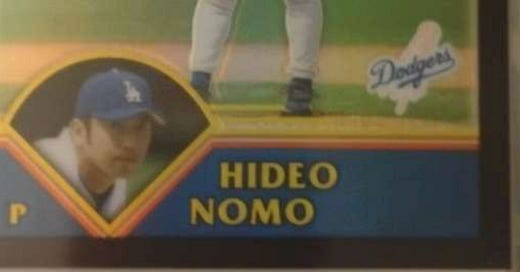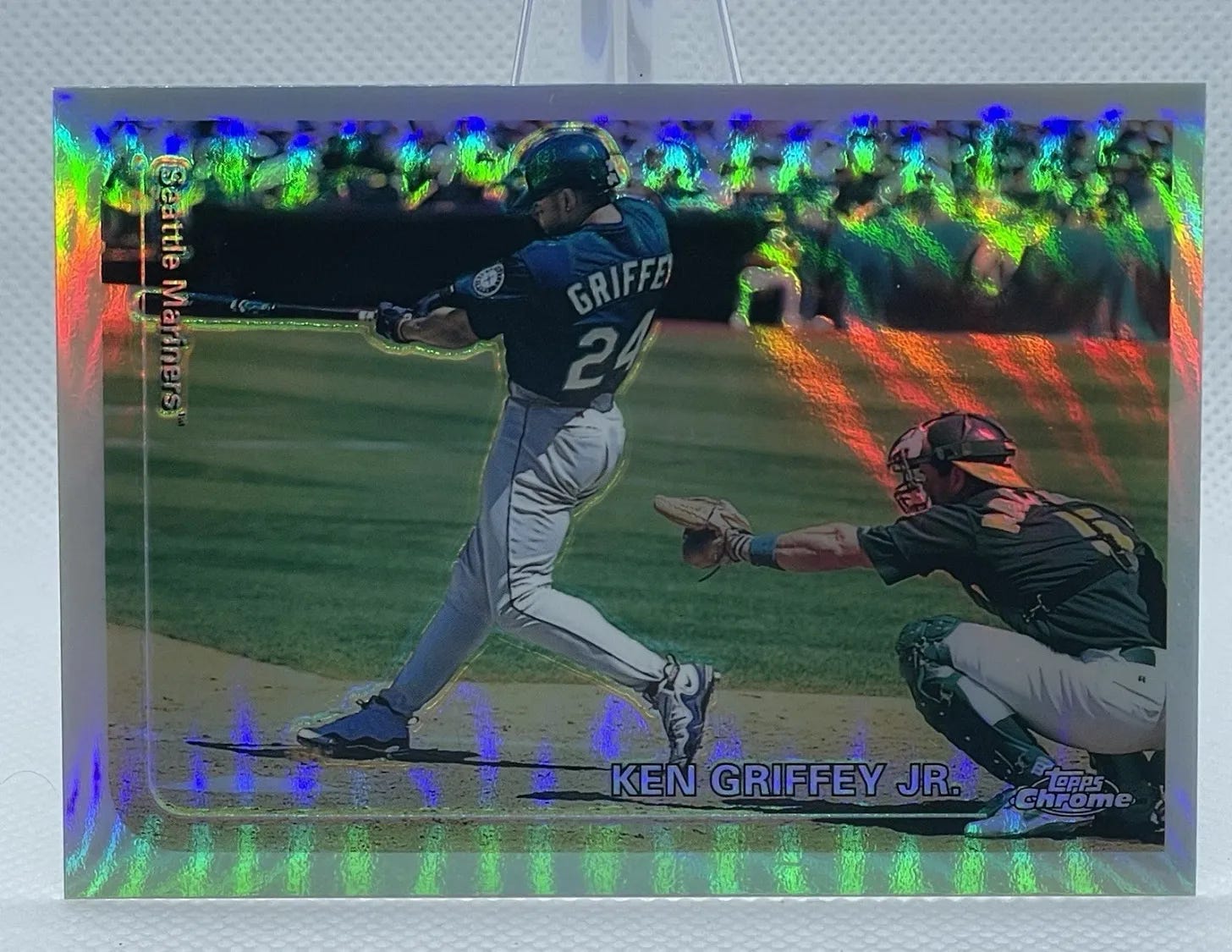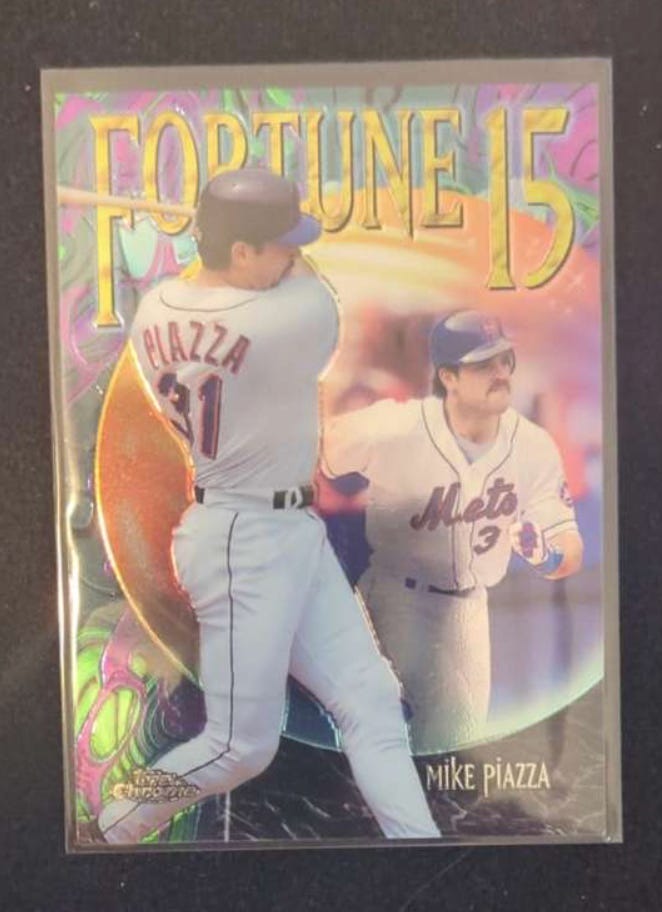Card Clues: Reading Refractors and Spotting Shine in Disguise
In this series, we slow down and look closer—because that’s where the value hides. This first edition digs into refractors, where knowing what to tilt, flip, or question can turn $5 into $250.
Affiliate Disclosure: This post contains affiliate links. As an Amazon Associate and being a part of the eBay Partner Network (and other programs), if you follow these links and make a purchase, I’ll receive a commission (at no cost to you). I appreciate your support!
This is not buying or investment advice. I’m simply reporting the data I’m seeing. Please do your own research and make your own decisions. Just because cards have increased in value up to this point, it doesn’t mean they will continue to do so.
Welcome to Card Clues—a new series dedicated to the small details that make a big difference. Whether you’re flipping for profit or collecting with purpose, this series is all about seeing what others overlook… and of course, using that edge to your advantage!
I’ve always said the backs of baseball cards were my first books. I’m not claiming that’s how I learned to read, but I definitely remember being more willing to take in the paragraph on a 1989 Topps card than anything my parents handed me. Team checklists, cartoon trivia, career stats—I soaked it all up.
But reading baseball cards goes way beyond the blurbs on the back.
As a collector or flipper, “reading” means knowing how to spot the subtle. The barely-visible variation. The missing foil stamp. The logo that’s just slightly off. These are the things most people miss—and the exact things that can separate a $1 card from a $100 card.
Not every seller is tuned into that. That’s where the edge is for you—not in reading what the card says, but in reading what the card is.
In this first installment of Card Clues, we’re talking refractors: how to spot them, how to tell them apart from base cards, and how to use that knowledge to grab value others scroll right past.
Because when you’re at the mercy of a seller’s photo, it’s good to know more than just “it’s shiny.”
For instance, is this a refractor?
Let’s find out about that, and more.
Refractor vs. Base
The refractor might be the most common variation to spot, but it’s still one of the most profitable, especially for cards from the 90s and early 00s.
At a glance, both base and refractor cards from a set like Topps Chrome will look shiny thanks to the chrome finish.
But here’s the trick: hold the card under direct light and tilt it slowly. If you see a rainbow effect or colorful light beams bounce back, you’re looking at a refractor. If the light reflection is flat and all one-tone? That’s a base card.
Another way to describe it: vibrance vs. dullness. A refractor catches the light and throws it back at you with personality—color, movement, shine. A base card looks good, but again, flat in comparison.
The best part? Sellers might not care enough to double-check. That’s your window. The hard part? You don’t have the card in your hand to check per the tests above.
Which one is a refractor?
Trick question… they both are!
Base chrome on the other hand usually show up like this:
I’ve come across raw refractors priced like base cards, even when the refractor version sells for double—or more.
Risking it for a Refractor
You might remember this one, but it’s a good reminder of the value of older refractors. I was actively checking for Griffey cards, and I found this: a 1999 Topps Chrome Refractor #100 for less than $2.
I listed it at $299, got an offer for $275, and ended up netting $233.32 after fees.
This was about as close to zero-risk flipping as it gets. The only trick was reading the card for what it really was.
These opportunities don’t grow on trees, but they come around every once in a while.
For instance, I’m really hoping this Piazza below I bought is a refractor. It was listed as so. I’ve got my fingers crossed that it shows up as expected. That’s part of the fun: identifying a possibility, making a small bet, and waiting to see if the play works out.
It was listed as a refractor, but priced as a base—$5 shipped. The lower-left corner “glow” is what I’m banking on.
On the other hand, it could just be that the light is focused on that one spot of the card, causing it to pop more than it typically would.
But again, that’s the game. I could very well be wrong. The more I look at it, the more I feel it’s base.
If it’s not a refractor, then I’m out $5. If it is, then I’m up big.
Searching by Player/Base Could Pay Off
A subscriber just shared a Pedro Martinez win the other day—one of those barely-noticeable corner design details that made all the difference.
Sometimes that small bit of real estate is all you need.
If you’re searching for “refractor” you won’t find this card. The best way to come across it is to just search by player and/or set (or card number). Trying to find an underpriced refractor by keyword limits you because you might not see those that are mislabeled.
Don’t Forget Color and Numbering
It’s also important to understand base vs. color refractors and how numbering works.
For example, I bought that 2023 Topps Chrome Hideo Nomo black refractor /199, which was listed as a base Chrome. But I knew that base Chromes have blue borders—not black.
Black, red, orange, yellow, green, blue, purple—basically any Chrome card that has a colorful border could be a refractor hint.
It’s a small detail, but again, reading the card for what it is gives you a massive edge.
Bonus Seller Tip: Good Photos Matter
Whether you’re selling or buying, lighting makes a difference. As you’ve seen, a refractor won’t show well in a dark, shadowy photo. I’ve bought cards from listings where you could barely tell what they were—then relisted them with better photos and got full value.
Here’s an example of what I mean. Look at the difference between the photo I took and the one from the original listing:
Back Check: What Refractors Say (or Don’t)
One other note. While most refractors will say “refractor” on the back of the card, some will have different, much more subtle markings—while others won’t say anything at all.
Most famously, 1993 Finest Refractors will not say “refractor” on the back:
But while most people know about that one, a bit trickier is a year like 1996.
You won’t find any “refractor” next to the number on this one either, but look below the MLBPA logo on the left and you’ll see an “R” on the refractor:
All in all, picking up on clues is the nature of the game—reading cards, taking small risks, and trusting what you know. Sometimes it pays off big. Sometimes you’re out five bucks. But either way, you’re sharpening the skill that gives you an edge.
Refractors are just the beginning.
Until then, keep tilting cards, zooming in on corners, and asking questions like: “Is that shine just chrome—or something more?”















Great information. I don’t do a lot of flipping but I will now be keeping an extra eye out for your tips.
Excellent article, looking forward to the rest of the series.